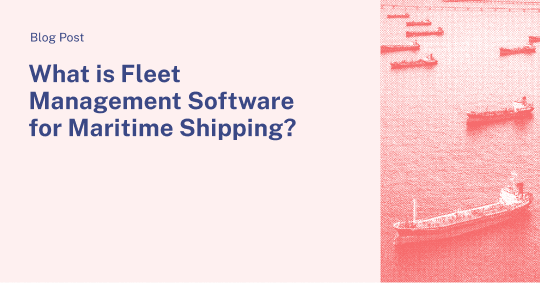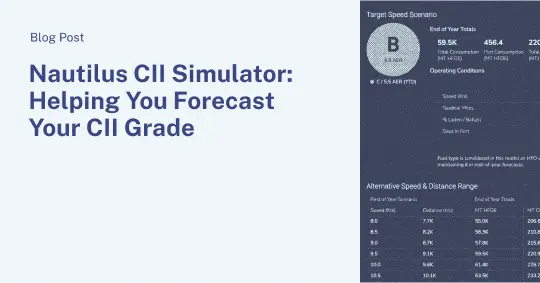Everyone can see the bulk market rebounding. TCE rates are climbing and renewed optimism is emerging. Many owners are focusing on acquiring vessels and ordering newbuilds to capitalize on the improving conditions. For Nautilus Labs, it is an exciting time to be working with clients in the sector. Not only are they capitalizing on buoyancy in the market, but they are also successfully taking advantage of an incredibly valuable commodity that many previously overlooked: Data. Specifically, high-frequency data (HFD) derived from a ship’s many navigational and machinery sensors.
One thing we’ve come to agree on is that this data source creates a competitive advantage for shipping companies that ultimately returns massive value to their business, shareholders, and customers. It is truly the hottest commodity in the sector.
But many owners and operators we talk to are not yet tapping into high frequency data and the questions we field from them boil down to – why does it matter to me? Why does the collection and analysis of it matter? How can it change my business? Isn’t my manual reporting good enough? If other people aren’t doing it, why should I bother? And where is the ROI for my business?
Over the course of our next few posts, we’ll explore these questions and share our perspective on why data is the next big bulk commodity that shipping should focus on and why this matters to every owner in every sector. We already documented the flaws of noon reporting at length and we’ve quantified some of the opportunities high frequency data creates for commercial optimization. But in terms of value, let’s just begin to explore how collecting, processing, and analyzing high frequency data creates immediate commercial impact on our clients’ businesses.
More Confident Vessel Descriptions
It all starts with producing more reliable and accurate performance curves. Traditionally, in order to mitigate the risk of performance claims and unprofitable voyages, commercial descriptions relying on manual data incorporate conservative buffers due to a lack of confidence. Overly conservative buffers ultimately limit the marketability and revenue generation potential of vessels, by reducing offered efficiency or requiring more room for fuel in the voyage P&L. And it’s all driven by the lack of insight that infrequent and inaccurate noon data provide for the teams generating the descriptions.
Meanwhile, the very nature of high frequency data provides much more granular visibility into a ship’s efficiency. Basing vessel performance models on it inspires more confidence across shipping companies because it produces a vastly more accurate expectation of vessel performance. In some cases, while the overall curves of the two datasets might be similar, the increased granularity of sensor data increases the confidence that the vessel will actually perform as described.
More Comprehensive Performance Curves
With the 2020 sulfur cap on the horizon, this confidence is critical in a near future characterized by higher fuel prices. Not only will higher costs drive greater focus on consumption overall, but we expect to see them drive increased charterer requirements for slow-steaming. Owners relying on manually collected data have virtually no available insight into their vessels’ performance at slow speeds. To prepare for what’s to come, it becomes increasingly important for owners to have and use data in slower speed ranges.
Unlike maritime companies that are still relying on point-in-time noon snapshots, which may not capture any data points on slow-steaming, those that leverage high frequency data are able to compile a statistically significant dataset to support slow-speed descriptions. Rather than relying on a best guess or an extrapolation, sensor data analysis actually develops a real expectation of what vessels consume while operating across their entire performance range. Compared with competitors who don’t have the data to understand expectations for their vessels at slower speeds, the companies that do will outperform others in the face of outside forces like regulatory changes and fuel price increases.
Faster Re-descriptions and ROI Analyses
We also see these outside forces driving owners to consider a panoply of other vessel upgrades to improve efficiency and compliance. From propeller modifications, to high-end hull coatings, to scrubber installations, there are a wide range of enhancements being considered in addition to regular maintenance actions like cleanings and dry-docks. Owners who rely on noon data analysis to judge the efficacy of these actions have to wait months to compile a statistically significant dataset to know whether a maintenance action effectively improved performance and if it warrants a re-description of a vessel at a new efficiency.
This time lag costs owners hundreds of thousands of dollars in potential revenue increases. Moreover, it makes it very difficult to to quickly ascertain if an upgrade worked, if it warrants the re-description of a vessel based on improved performance, and if a particular upgrade should be deployed fleet-wide to realize similar performance benefits. For each ship, this delay could aggregate into tens of thousands of dollars of lost TCE improvements, as an owner waits an additional four to six months to confidently re-describe its vessel. Put simply, HFD analysis allows owners to recoup upgrade costs more quickly, understand their effectiveness more clearly, and act to expand successful programs rapidly.
And That’s Just Where it Starts
These clear ROI-justified benefits form the foundation of the business case for the Bulk sector to finally embrace this new commodity. But ultimately, it’s just the beginning. In our next post, we’ll explore how Nautilus Labs leverages high frequency data along with data science and machine learning to help our clients extract maximum value from vessel insights. After you’ve laid the foundation of automating data collection and bringing it together in one place, you need to figure out the best ways to drive action around it. And that’s where high frequency data ends up being worth its weight in gold.


